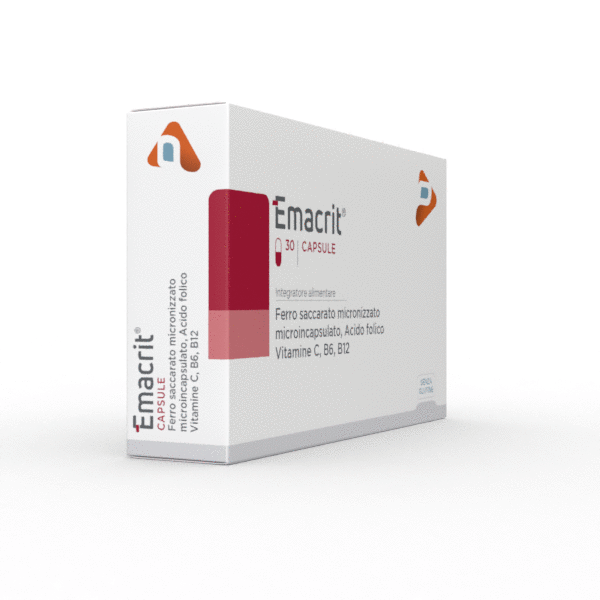According to an estimate by the World Health Organization, around 2 billion people in the world suffer from iron deficiency anemia, a disease that involves the reduction of hemoglobin circulating in the blood inside the red blood cells (erythrocytes) due to iron deficiency. The causes are many, and the symptoms are often not recognized. This leads to a decrease in the quality of life, which is also significant, a problem that would be avoidable.
Symptoms
Anemia, fatigue and decreased ability to perform demanding jobs or poor academic performance, weakness, drowsiness, are the most well-known and known symptoms, but next to these, there are other alarm bells that may lead to suspect a lack of iron. Between these:
• leg cramps when climbing stairs
• increased sensitivity to cold
• pallor
• ease in contracting infections
• the desire for ice (in some cases, cold celery or other cold vegetables) to suck or chew
• behavioral alterations (eg attention deficit disorder)
• dysphagia with solid foods
• worsening of symptoms due to heart or lung disease
At the physical examination, some general or typical signs may also occur, such as:
• the pallor of the mucous membranes,
• spoon-shaped nails,
• glossy tongue, with atrophy of the lingual papillae,
• cracks in the corners of the mouth (angular stomatitis).
Alarm levels
Iron is very important for humans, as it is involved in the functioning of numerous mechanisms. In particular, it is essential for the functioning of hemoglobin (Hb), a protein used for transporting oxygen in the blood. To make a diagnosis, several useful tests are available, such as complete blood count, serum iron measurement, serum ferritin, total iron-binding capacity (TIBC), that is the amount of transferrin available for binding and transport of iron. Blood tests allow you to know your health status, and to understand if you are in a state of anemia. In adults, this is characterized by blood hemoglobin values that are below 13 g / dl in humans and 12 g / dl in women (in pregnancy the limit value is 11 g / dl). In children, anemia occurs when hemoglobin falls below 11 g / dl in children between 6 months and 4 years, below 11.5 g / dl in children between 5 and 12 years and below 12 g / dl in adolescents aged 13 to 15 years. Overall, low levels of iron and serum ferritin with a high TIBC (transferrin) are diagnostic of this mineral deficiency. However, it should be borne in mind that in the case of coexisting diseases, such as hepatitis or chronic anemia, serum ferritin may be normal or increased.
What to do?
The people most affected by iron deficiency are women with abundant menstrual flows, or pregnant and breastfeeding, individuals over the age of 55, sportsmen, vegetarians, and vegans and people with reduced absorption (for example due to chronic intestinal diseases or celiac disease).
Sometimes it may be sufficient to integrate iron-rich foods into the diet, such as fish (eg stockfish), meat (eg beef liver), green vegetables (eg green radicchio, rocket, spinach) and legumes, dried fruit ( pistachios, cashews, almonds, hazelnuts, roasted peanuts, dried figs), eggs and dairy products.
It should be emphasized, however, that the human being is able to absorb only about 10-15% of the iron content in food.
It is sometimes advisable to use a food supplement. In this case, it is good to keep in mind that iron, when taken in combination with folic acid and vitamins B6 and B12, promotes the normal formation of red blood cells and helps to combat tiredness and fatigue. In addition, a formulation that also includes Vitamin C allows the increase in iron absorption. To avoid both the metallic aftertaste and the classic disorders associated with iron supplementation and to guarantee high assimilability, this mineral is now also available in micronized and microencapsulated form in calcium alginates.


